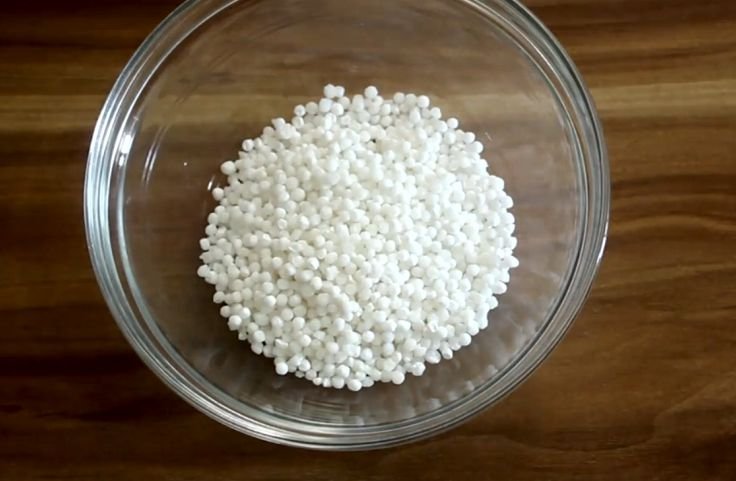Tapioca sabudana plays a key role in Indian fasting meals, especially sabudana kheer, offering energy and comfort. It’s light, filling, and perfect for dishes you can enjoy during religious or cultural fasts.
During religious fasts, sabudana becomes your go-to ingredient because it is light on the stomach yet provides a quick energy boost.
Across India, families prepare dishes like sabudana kheer or khichdi, where the tapioca pearls are gently stir-fried with peanuts and mild spices, or the crispy sabudana vada, a favorite for its flavor and crunch.
Street food vendors also turn sabudana into snacks that you can enjoy outside fasting days, showing how easily it fits into everyday eating.
Its mild taste allows it to absorb flavors beautifully, which makes it ideal for both savory and sweet recipes.
From your home kitchen to bustling markets, sabudana remains a staple that keeps fasting meals satisfying and Indian culinary traditions alive.
Recommended: Chewy and Tasty Tapioca Snacks
Table of Contents
- What is Tapioca Sabudana?
- Cultural and Culinary Significance
- How to Make Sabudana from Tapioca Starch
- Indian Recipes Made with Sabudana
- Health Benefits of Tapioca Sabudana
- Storage and Shelf Life
- Common Mistakes to Avoid with Tapioca Sabudana
- Conclusion
- Frequently Asked Questions
What is Tapioca Sabudana?
Tapioca sabudana, also called sabudana, are small white pearls made from the starch of the cassava root. Though similar in appearance to sago pearls, they come from different plants: sabudana from cassava, sago from sago palm.
Sabudana has a chewy texture that works well in dishes like vada, khichdi, and kheer, especially during fasting.
It’s a staple in Indian vrat recipes thanks to its energy-boosting carbs and light feel. Tapioca also appears in other forms, like flour and sticks.
Tapioca flour is great for thickening or gluten-free baking, while tapioca sticks are used differently and don’t cook the same as sabudana.
Knowing what makes sabudana different helps you use it right in your kitchen, especially if you’re cooking for fasting or regional Indian meals.
Cultural and Culinary Significance
Tapioca sabudana brings comfort to your plate, especially during fasting seasons like Navratri or Ekadashi.
You turn to it not just because it’s allowed during fasts, but because it keeps you full and fueled.
In Maharashtra, you might enjoy a warm bowl of sabudana khichdi, its soft pearls tossed with peanuts and mild spices.
In Gujarat, the crispy sabudana vada becomes your go-to snack, dipped in chutney, shared with family.
In Tamil Nadu, sweet sabudana kheer brings joy to festive moments, featuring milk, sugar, and cardamom.
These dishes go beyond taste. They connect you to family memories and traditions that have been passed down through generations.
Every bite carries a story of devotion, community, and celebration.
With sabudana, you’re not just eating, you’re participating in something deeply rooted in your culture.
Related Posts
Are Tapioca Pearls Gluten Free?
Is Tapioca Pudding Good for You?
Can Diabetics Eat Tapioca Pudding?
Tapioca Recipes: A Delightful Experience from Cassava
How to Make Sabudana from Tapioca Starch
Sabudana is traditionally made from tapioca starch extracted from cassava root. You can recreate small batches at home using this simplified process, though industrially, it’s a complex drying and pelletizing technique.
Ingredients
- 1 cup tapioca starch (also called cassava starch)
- ¼ cup hot water (adjust as needed)
- A pinch of salt (optional)
Recipe
- Prepare a starchy dough
- Add tapioca starch to a mixing bowl.
- Gradually pour in hot water while mixing with a spoon or chopstick.
- Once cool enough to touch, knead the mixture into a smooth, pliable dough. It should not be sticky or dry.
- Shape into pearls
- Take small portions of dough and roll them into tiny balls between your palms.
- Try to keep the size even, around 2–3 mm in diameter, like commercial sabudana pearls.
- Dry the pearls
- Spread the balls on a clean cloth or tray and allow them to dry in a well-ventilated area for 24–48 hours.
- Turn them occasionally to ensure even drying. They should become hard and dry like store-bought sabudana.
- Store or use
- Once fully dried, store them in an airtight container.
- To cook, soak the homemade sabudana just like the packaged version before using it in recipes like Sabudana Khichdi or Kheer.
Want the full guide with photos, troubleshooting tips, and why moisture matters? Read the detailed post here: How to Make Sabudana/Tapioca Pearls from Tapioca Starch at Home
Indian Recipes Made with Sabudana
Sabudana is a beloved ingredient in Indian cuisine, especially during fasting seasons.
Its soft, chewy texture and neutral taste make it suitable for both sweet and savory dishes.
Here are some staple Indian recipes made with sabudana, but we will give the recipe for only one, the kheer.
Sabudana Khichdi
Sabudana Khichdi is a classic Indian fasting dish made with soaked sabudana pearls, boiled potatoes, roasted peanuts, green chilies, and cumin seeds.
The pearls turn translucent and soft, absorbing the flavors of the spices.
It’s cooked with minimal oil and seasoned simply, making it light yet filling.
The peanuts add crunch, while the potatoes provide body. Fresh coriander and lemon juice are added for brightness.
Sabudana Khichdi is commonly eaten during Navratri and Ekadashi fasts, but is just as enjoyable as a regular breakfast or snack.
Served warm, it’s comforting, mildly spiced, and incredibly satisfying. Also, see how many calories sabudana khichdi contains.
Sabudana Kheer
Sabudana Kheer is a creamy dessert made by simmering soaked sabudana in full-fat milk until the pearls become soft and the mixture thickens.
Sugar is added to sweeten, and the dish is enriched with ghee-roasted cashews, almonds, and raisins.
A touch of cardamom powder lends a fragrant aroma that pairs perfectly with the chewy pearls.
This pudding-like dish is often served during religious fasts and special occasions due to its nourishing and comforting nature.
It’s best enjoyed warm or chilled, depending on preference.
The richness of milk, the mild sweetness, and the tender texture of sabudana make this kheer truly indulgent. See the recipe in the next section.
Sabudana Vada
Sabudana Vada is a deep-fried snack popular during fasting days in India.
These crispy patties are made by combining soaked sabudana with mashed potatoes, crushed peanuts, green chilies, cumin, and chopped coriander leaves.
The mixture is shaped into round or oval patties and fried until golden brown and crunchy on the outside while remaining soft inside.
The peanuts lend a nutty flavor and crunch, while the potatoes bind everything together.
Sabudana Vadas are often served with yogurt or green chutney, making them an ideal tea-time or festival snack.
Their delicious taste and crisp texture make them a crowd favorite beyond fasting days.
Sabudana Thalipeeth
Sabudana Thalipeeth is a shallow-fried, savory flatbread made using soaked sabudana, mashed potatoes, crushed peanuts, and mild spices.
The mixture is kneaded into a soft dough, shaped into patties or discs, and cooked on a hot griddle with ghee or oil.
It’s typically made during fasting periods, offering a wholesome and hearty option that is both gluten-free and satisfying.
The outer layer becomes golden and slightly crispy, while the inside stays soft and chewy.
Thalipeeth is often served with curd or sweetened yogurt for a balanced meal. Its simplicity and rustic flavor make it a staple in fasting thalis.
Related: Recipe for Tapioca Chips
Health Benefits of Tapioca Sabudana
Tapioca sabudana gives you more than just a way to fill your plate.
It supports energy levels, digestion, and dietary needs, especially during fasting. Here’s how it helps you:
Quick Energy When You Need It
You’ll feel the difference when you add tapioca sabudana to your fasting meal. It’s packed with carbs that fuel your body fast.
If you’re low on energy or skipping meals, this can help keep you going.
It’s also useful after workouts or long hours without food.
Just a small bowl gives your body the push it needs without weighing you down.
Gluten-Free and Easy on the Stomach
If gluten upsets your system, sabudana works as a gentle alternative. You can eat it without worrying about wheat or digestive discomfort.
It’s smooth on your stomach, which makes it a smart pick for kids, older people, or anyone feeling under the weather.
Its mild texture and ease of digestion mean you won’t feel bloated or sluggish after eating it.
Great for Fasting and Special Diets
During fasting, your food choices are limited. Tapioca sabudana fits right in.
You can use it to make filling, flavorful dishes that still follow traditional fasting rules.
It helps you stay full longer and gives your body fuel without breaking fast guidelines.
Even outside fasting, it fits clean or light diets without too many ingredients.
Related: How Gluten-Free Are Tapioca Pearls
Works in Sweet or Savory Meals
You don’t have to eat the same thing every time. Sabudana works in both sweet and savory recipes.
From khichdi to kheer, you can switch it up and still get the same benefits.
This makes your meals less boring and more satisfying while still being good for your health.
You control how light or rich the meal becomes.
Easy to Digest, but Keep It Balanced
You can digest sabudana easily, but don’t go overboard. It has a high glycemic index, which means it can spike your blood sugar if you eat too much.
If you’re diabetic or watching your carbs, portion control is key.
It’s better to enjoy it in small amounts and mix it with proteins or fiber-rich sides.
Storage and Shelf Life
To keep tapioca sabudana fresh, store it in an airtight container in a cool, dry place away from sunlight and moisture.
When stored properly, dry sabudana lasts 1 to 2 years.
A pantry or cupboard with a stable temperature works well. After soaking, sabudana’s shelf life shortens to about 24 hours in the refrigerator.
Use soaked sabudana quickly, as it can become slimy or develop an unpleasant odor if left too long.
Only soak what you plan to cook to avoid waste.
Check for signs of spoilage in dry sabudana, such as mold, discoloration, or a bad smell.
If any of these appear, discard them. With proper storage and a quick freshness check, you can enjoy sabudana’s comforting texture and energy-boosting benefits in your favorite recipes.
Common Mistakes to Avoid with Tapioca Sabudana
Tapioca sabudana can make your fasting meals and comfort dishes light, flavorful, and satisfying, if you handle it the right way.
Let’s look at common mistakes you’ll want to avoid:
Soaking for Too Long
If your sabudana turns sticky, you probably soaked it too long. Soak for just 2 to 4 hours, then rest the drained pearls.
They should feel soft, not soggy. Over-soaking ruins the texture and makes everything mushy during cooking.
Skipping the Rinse
Never skip rinsing. Rinsing removes surface starch, which keeps sabudana from clumping.
Use cold water and rinse until it runs clear. This step helps the pearls stay separate and absorb flavor better in dishes like khichdi or vada.
Picking the Wrong Type
Choose regular sabudana, not instant. Instant might save time, but it often lacks the bite and flavor you want.
Traditional fasting recipes work best with regular sabudana soaked properly for a soft, chewy texture and even cooking.
Ignoring Soaked Texture
After soaking, check the texture. The pearls should feel soft but hold their shape. If they break or feel mushy, they’re too wet.
Let them rest in a dry bowl for 30 minutes before cooking to prevent clumps.
Conclusion
Tapioca sabudana is a staple in Indian fasting traditions and cherished for its comforting texture, neutral taste, and energy-boosting qualities.
Rich in carbohydrates and naturally gluten-free, it supports dietary needs while offering satisfaction in both sweet and savory dishes.
Its ability to absorb flavors makes it ideal for recipes like sabudana khichdi, vada, and kheer.
Beyond nutrition, sabudana plays a meaningful role in cultural fasting practices.
When prepared properly, it delivers not just taste but also a sense of tradition and nostalgia.
By avoiding common mistakes and experimenting with recipes, you can enjoy sabudana in delicious, wholesome meals that connect heritage with everyday cooking. Let it be a regular in your kitchen.
Frequently Asked Questions
Is sabudana and tapioca the same?
Yes, sabudana is made from tapioca starch derived from cassava root. The term “sabudana” is commonly used in India for tapioca pearls used in cooking.
Can I use sabudana for bubble tea?
Technically, yes, but sabudana is smaller and softer than traditional boba pearls. It won’t have the same chewy texture typically expected in bubble tea drinks.
How do I know it’s soaked perfectly?
Perfectly soaked sabudana pearls are soft when pressed but hold their shape. They shouldn’t have a hard center or be mushy and sticking together.
Why does sabudana become sticky?
Sabudana becomes sticky when over-soaked or not rinsed properly. Excess surface starch and too much water can make the pearls clump and lose their structure.
References

Chimeremeze Emeh is a writer and researcher passionate about Africa’s most transformative root crop—cassava. Through his work at cassavavaluechain.com, he explores the entire cassava industry, from cultivation and processing to its diverse applications in food, health, and industrial use.
He also writes for palmoilpalm.com, where he shares his extensive experience and deep-rooted knowledge of palm oil, covering red palm oil, palm kernel oil, and refined products. His work there reflects his lifelong connection to agriculture and his commitment to promoting sustainable value chains in Africa.
Driven by curiosity and purpose, Chimeremeze aims to shed light on how cassava continues to empower communities, strengthen food systems, and link traditional farming wisdom with modern innovation.

